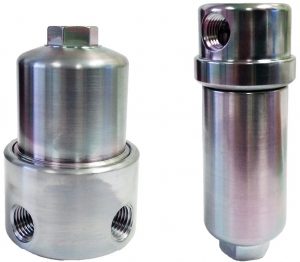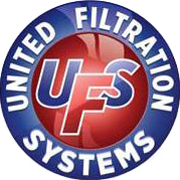 Because high durability stainless steel filters have a tremendous amount of adsorptive stainless steel surface area the surface will adsorb or capture H2S, mercaptans, and other sulfur compounds; making analyzers like CEMS (continuous emission monitors) ineffective. Sulfur adsorption can hold up accurate CEMS measurements by up to 90 minutes or more.
Because high durability stainless steel filters have a tremendous amount of adsorptive stainless steel surface area the surface will adsorb or capture H2S, mercaptans, and other sulfur compounds; making analyzers like CEMS (continuous emission monitors) ineffective. Sulfur adsorption can hold up accurate CEMS measurements by up to 90 minutes or more.
SilcoNert® 2000 gives the ultimate passivation treatment for stainless steel surfaces. This is not a consideration with our disposable filter media as these offer an inert surface, however, the stainless steel filter elements must be considered for treatment with SilcoNert® to create a completely inert flow path. SilcoNert® technology ensures the treatment penetrates even the smallest pores in the surface of the filter housing, and stainless steel elements. This should be used when analyzing in the parts-per-billion levels of sulfur compounds & mercury. Contamination by moisture is also reduced and overall sample system performance is improved.
Any stainless steel filters supplied by United Filtration Systems/Headline Filters can be SilcoNert® 2000 treated with a estimated delivery of 2-3 weeks. We have many customers that request our H series of heatable housings for automotive emission testing be SilcoNert® coated for the above reasons, but also because the coating helps prevent galling and makes element removal easier. The SilcoNert® creates a “smooth” surface which eliminates element sticking do to the constant high temperature operations.
For further details please contact Dirk Loveland at dirk@unitedfiltration.com or call 1-800-311-5561 (ext. 222).

 Borosilicate glass microfibers are considered to be the ideal filter media available for the coalescing of liquid aerosols. This material is neither liquid adsorbent nor absorbent and consequently, is superior for retaining its original properties while in service. The C-Type element has a two-layer structure, an inner particle capture-layer and an outer drainage layer. Liquid droplets remain mobile once captured and travel through the fine-pored captured-layer, along the intersecting microfibers, growing in size as they progress. These coalesced droplets are transferred to the large-pored drainage-layer, from where they drain by gravity into the filter bowl.
Borosilicate glass microfibers are considered to be the ideal filter media available for the coalescing of liquid aerosols. This material is neither liquid adsorbent nor absorbent and consequently, is superior for retaining its original properties while in service. The C-Type element has a two-layer structure, an inner particle capture-layer and an outer drainage layer. Liquid droplets remain mobile once captured and travel through the fine-pored captured-layer, along the intersecting microfibers, growing in size as they progress. These coalesced droplets are transferred to the large-pored drainage-layer, from where they drain by gravity into the filter bowl.